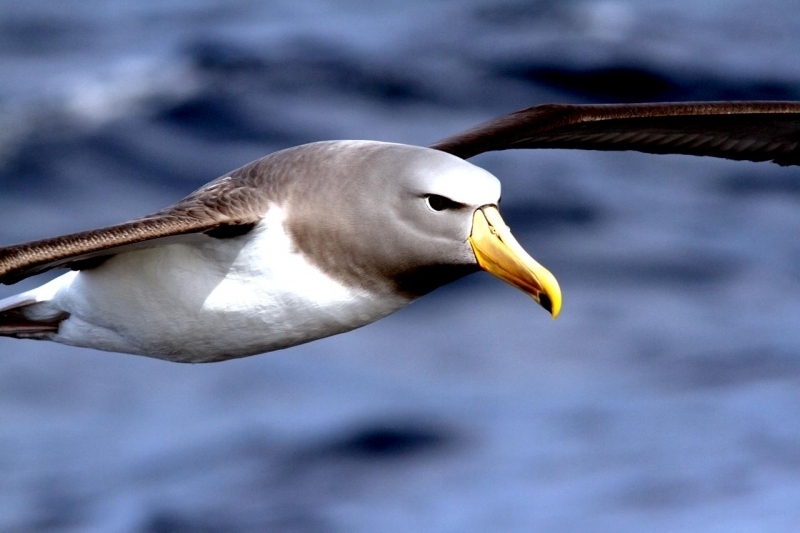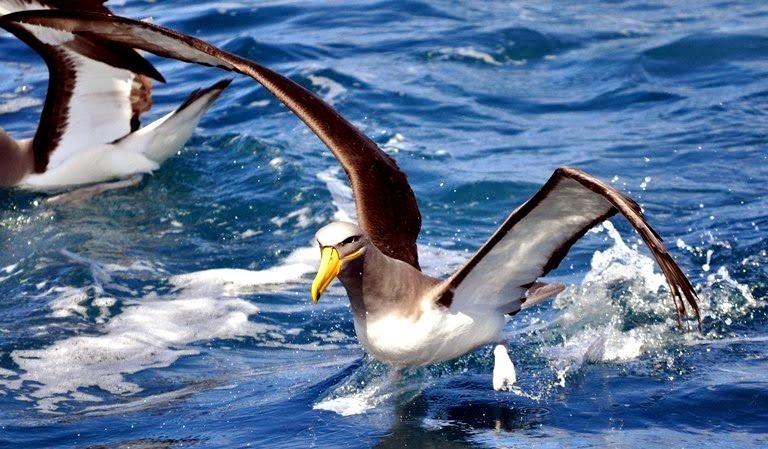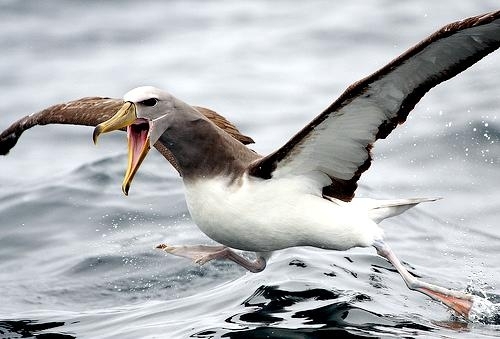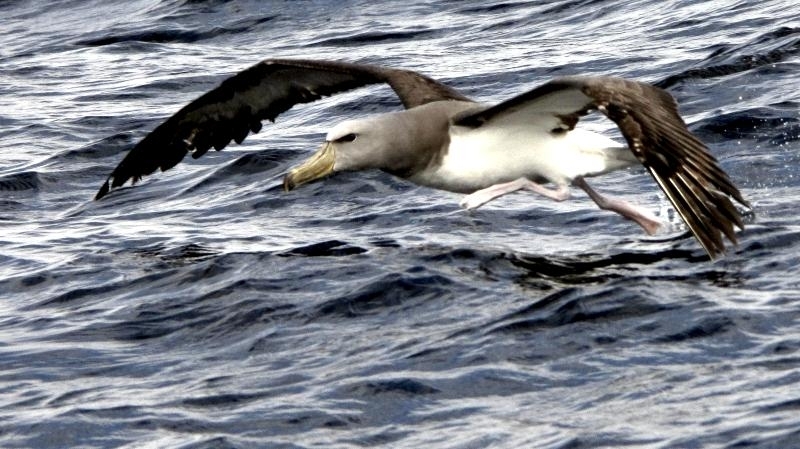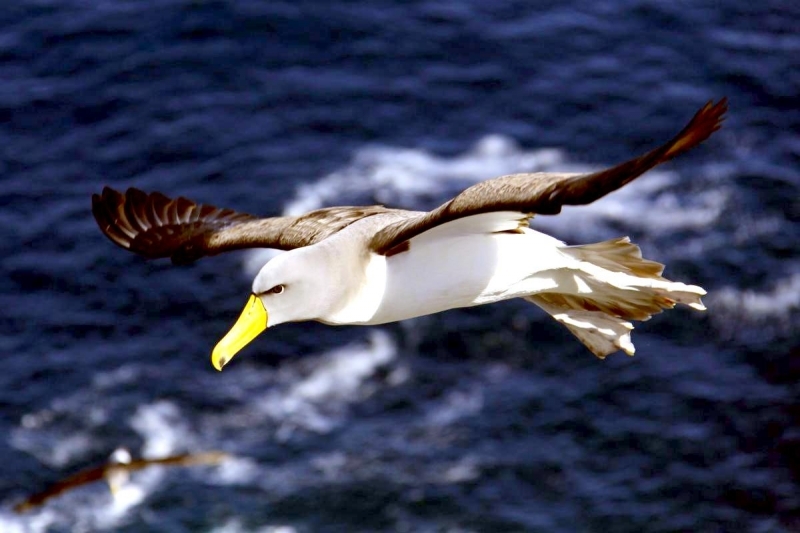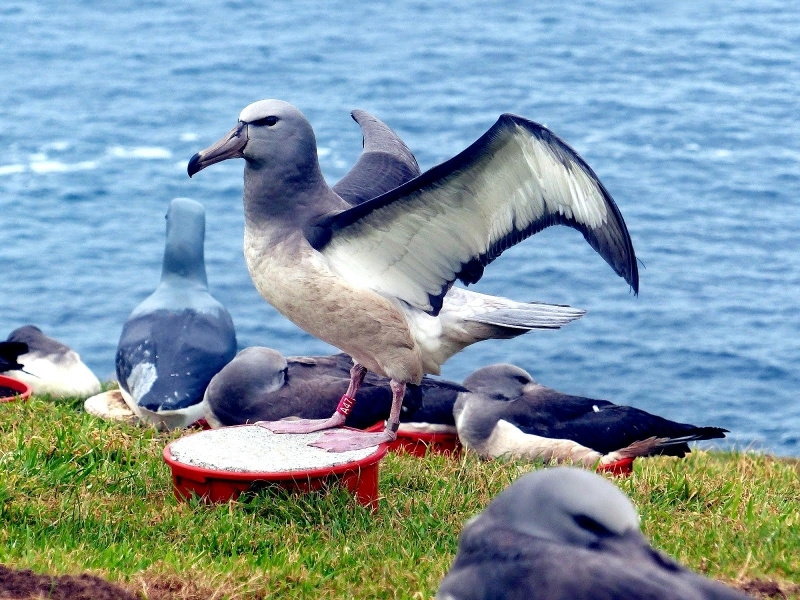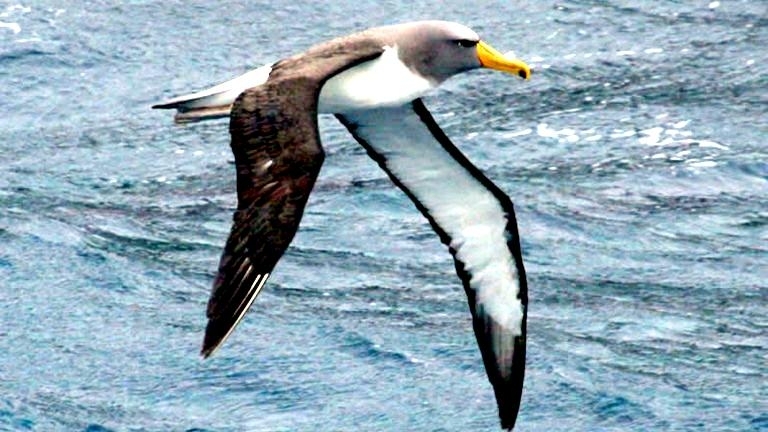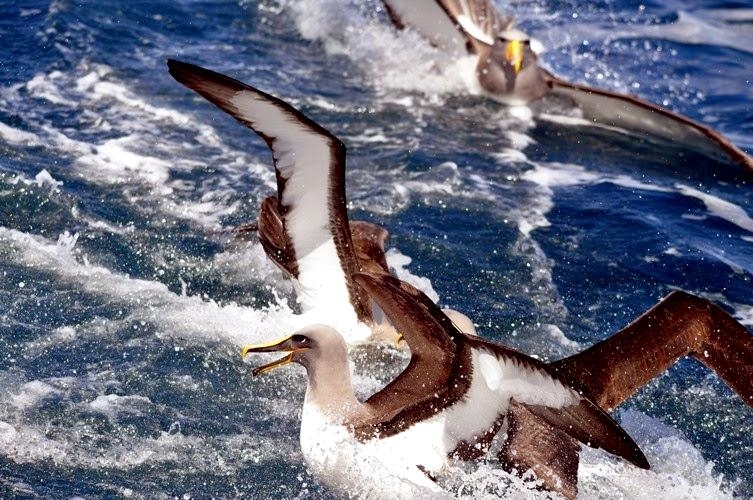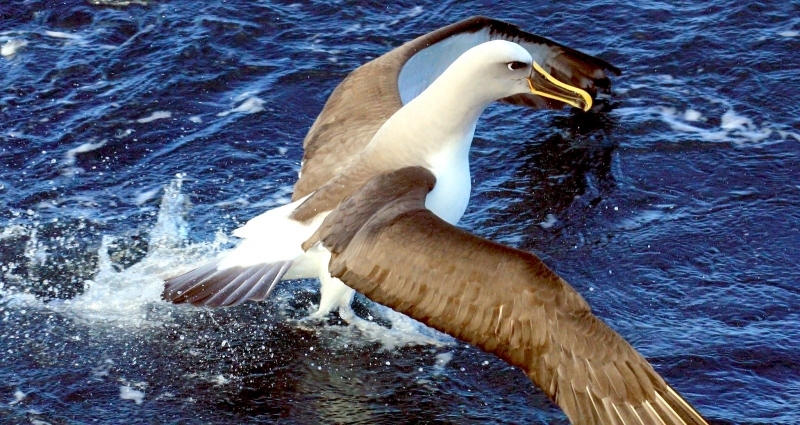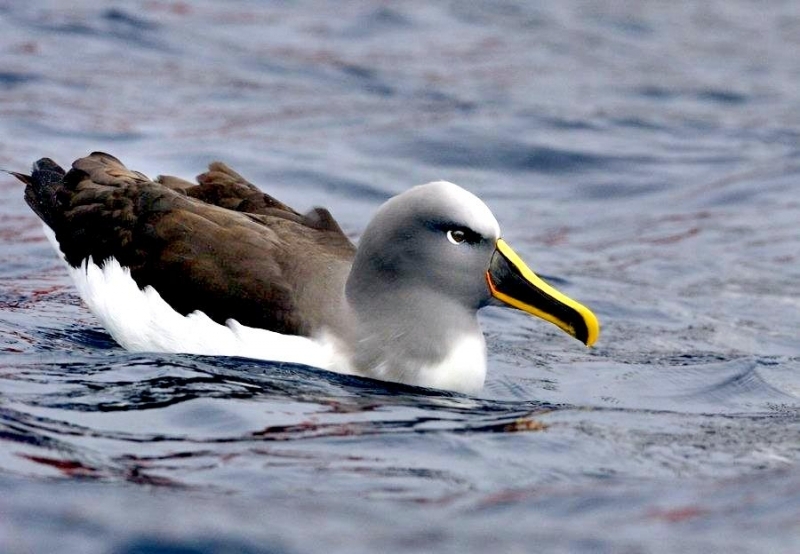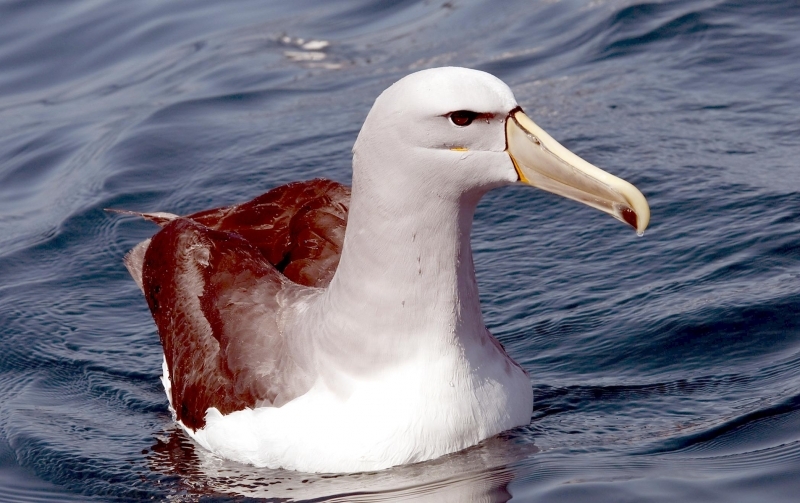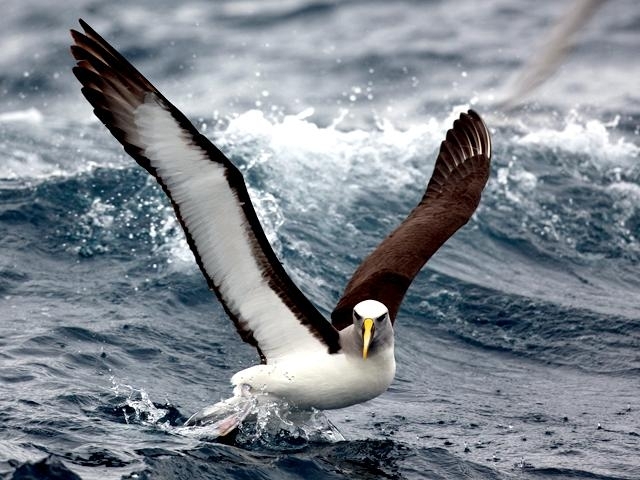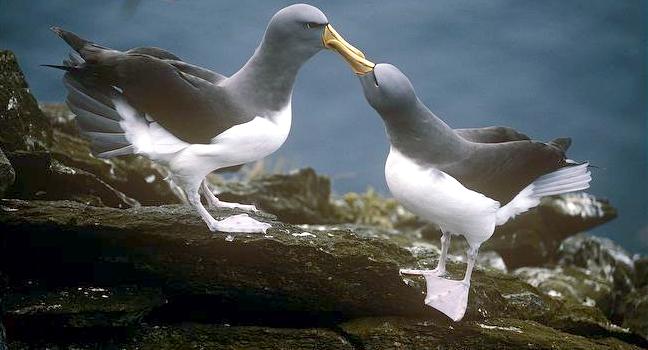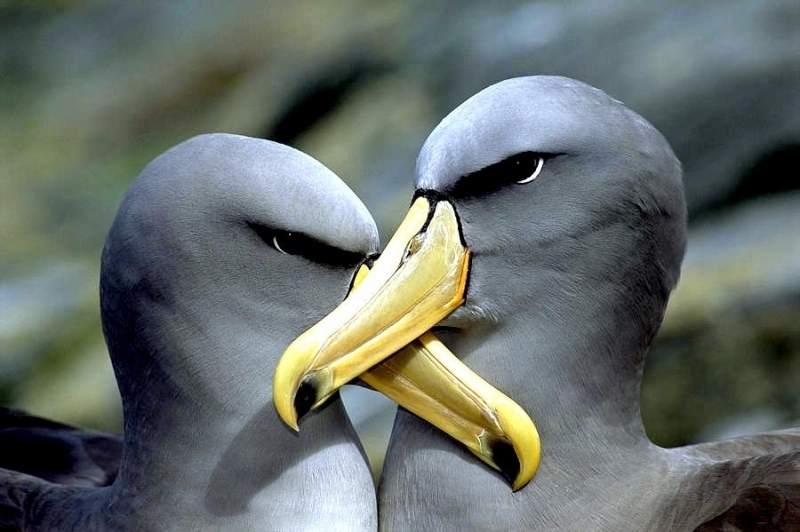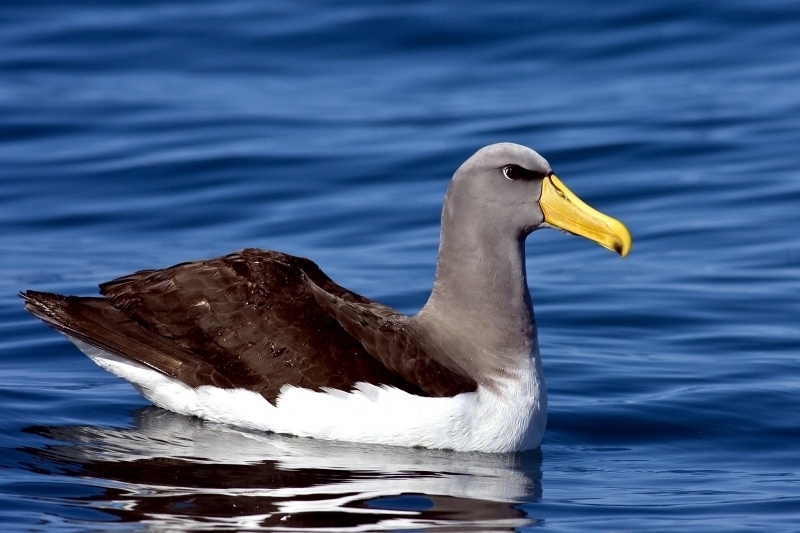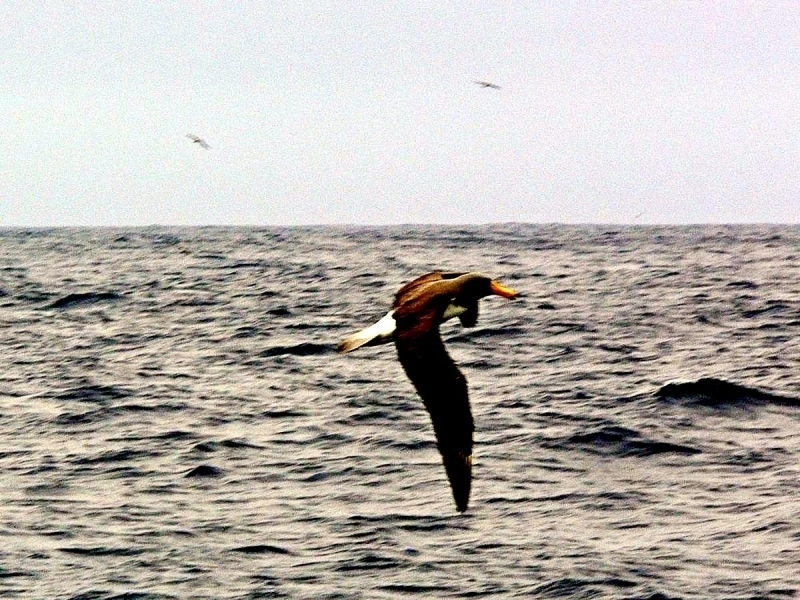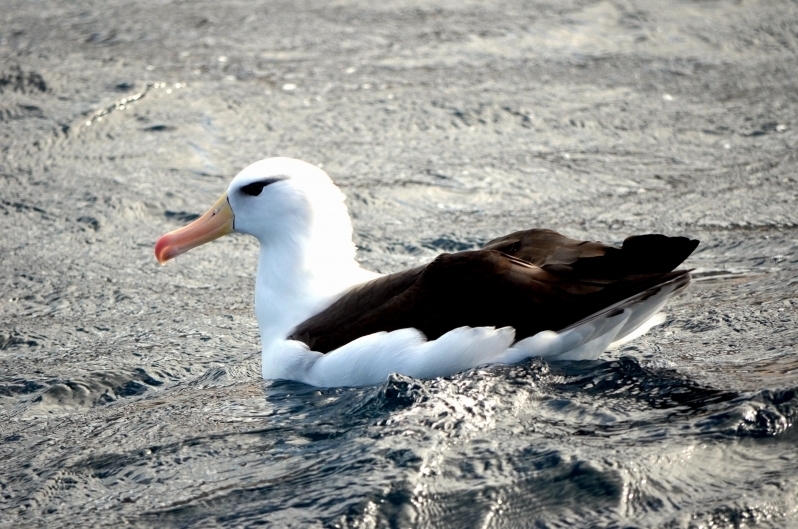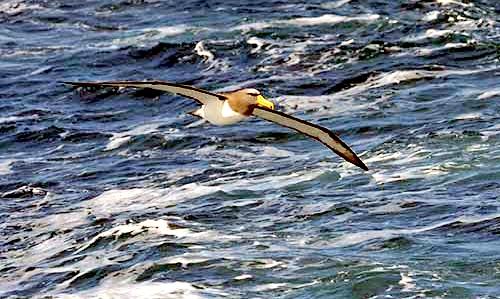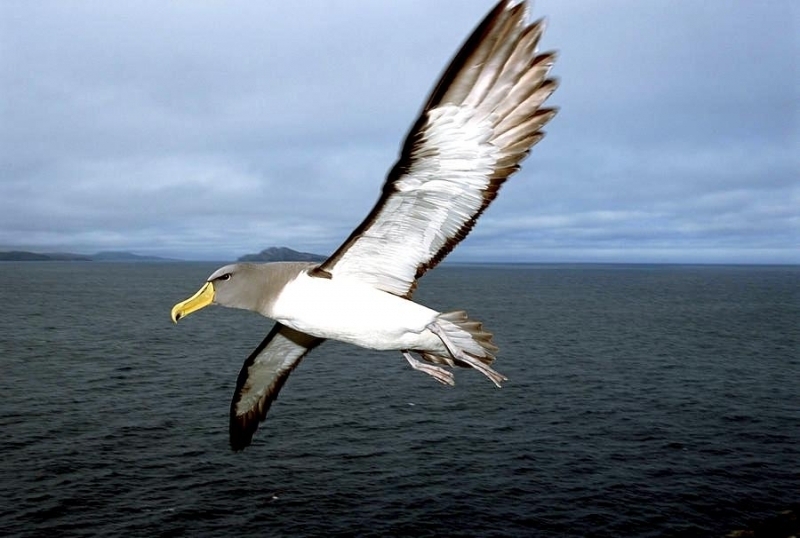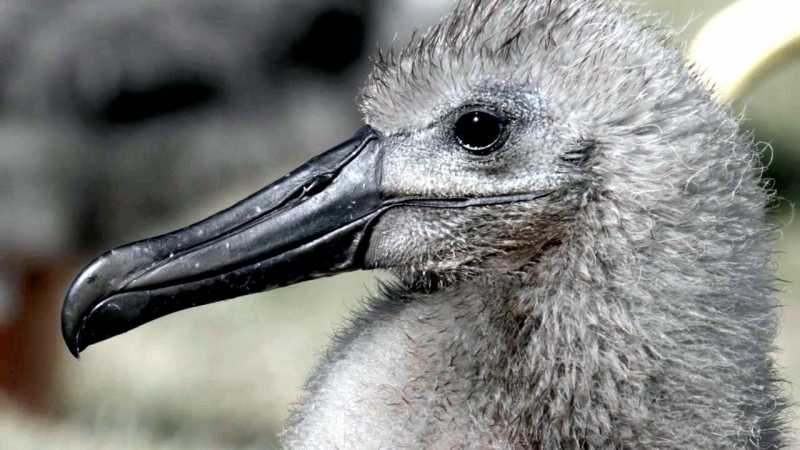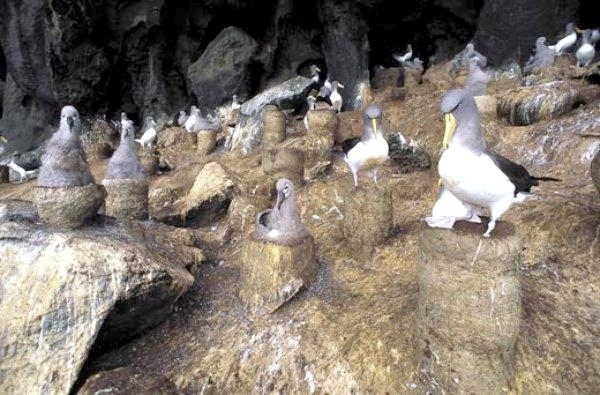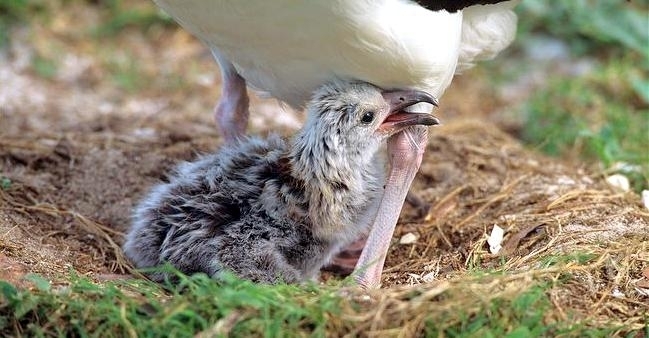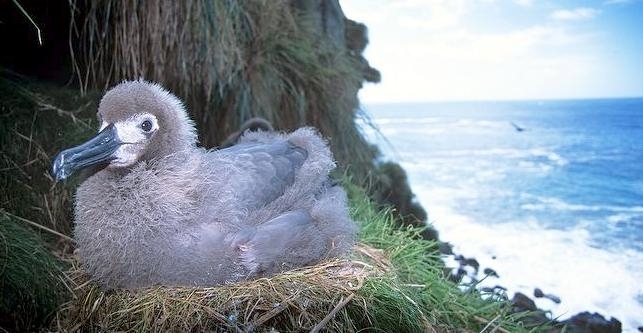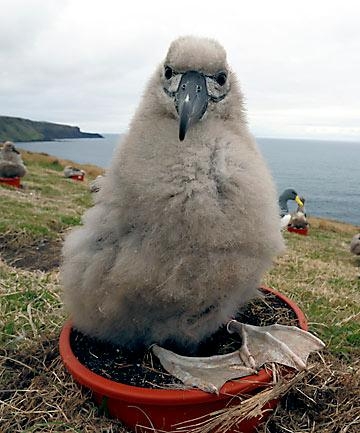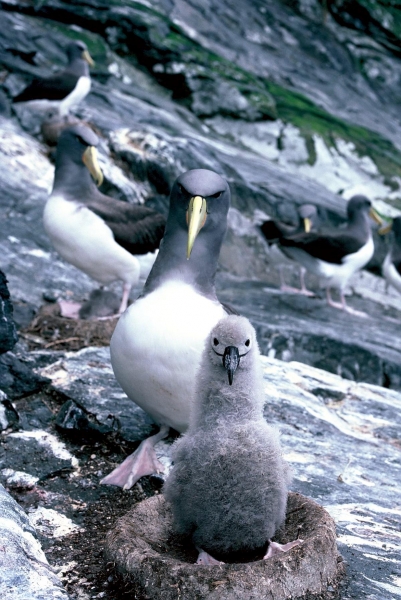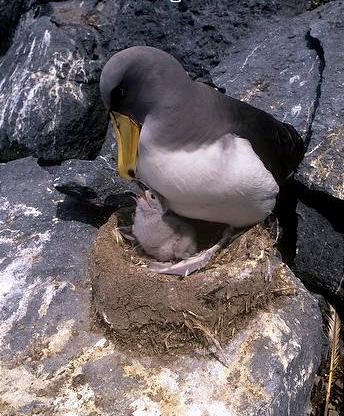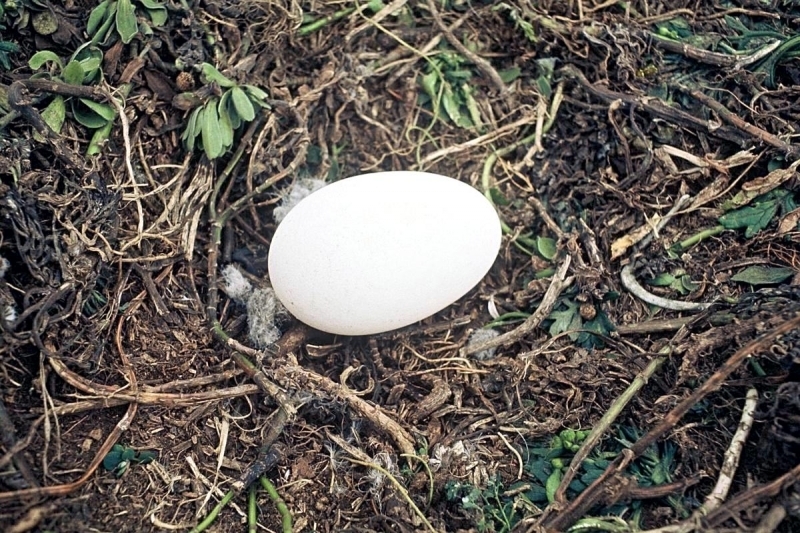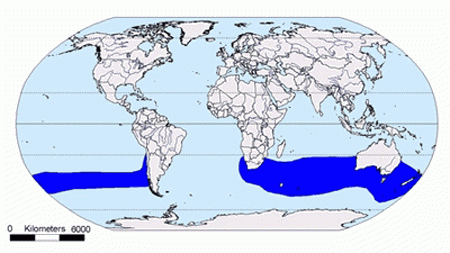“Thalassarche eremita”
The Chatham Albatross has gray-black plumage on the back, tail and upper sides of the wings, while the rump and underparts are white. The crown, face and throat are dark gray, contrasting with the sharp bill, which is bright yellow with a dark spot at the tip of the lower mandible. Juveniles have more gray plumage and a blue-gray bill, with black tips to both mandibles. Incubation of the egg and feeding of the chick is carried out by both parents in 5 day stints. The name albatross came from the Arabic word al-câdous or al-ġaţţās. This means “the diver” and later became English, also mixed with the Portuguese word alcatraz. This is also where the name of the prison Alcatraz comes from. These seabirds breed only on the Pyramid, a large rock stack in the Chatham Islands of New Zealand. From late July to early April, non-breeders followed by successful breeders migrate across the South Pacific to Chile and Peru. Tracking of the Chatham Albatross has shown that they complete this immense journey in 11 to 30 days. They then return to the Chatham Islands via a more northerly route in July and August.
Out over the ocean, the Chatham Albatross feeds on a diet of squid, fish and krill. Chatham Albatrosses form dense colonies on the grassy and rocky slopes, ready to breed again. Due to the difficult access of the Pyramid islet and the frequently challenging sea and weather conditions surrounding it, the Chatham Albatross remains one of the least known of the world’s albatross species. It is thought to lay a single egg every year in August or September and incubate it for 66 to 72 days. The egg hatches between October and December and the chick is thought to fledge between February and April. Young Chatham Albatross chicks have been recorded first returning to the breeding colony at 4 years of age and at the age 7, begin breeding.
